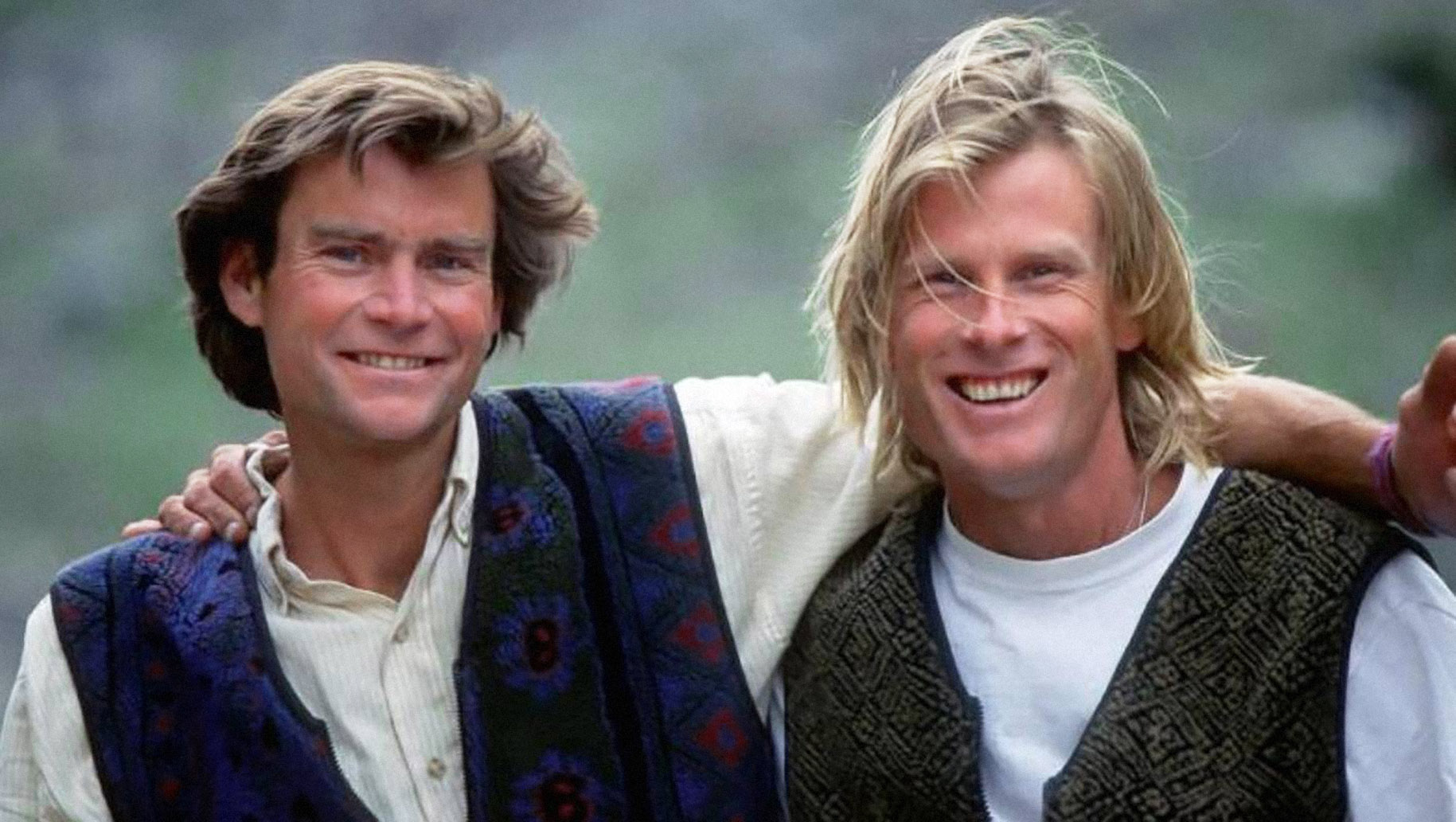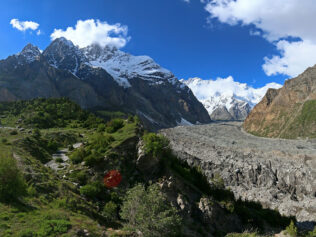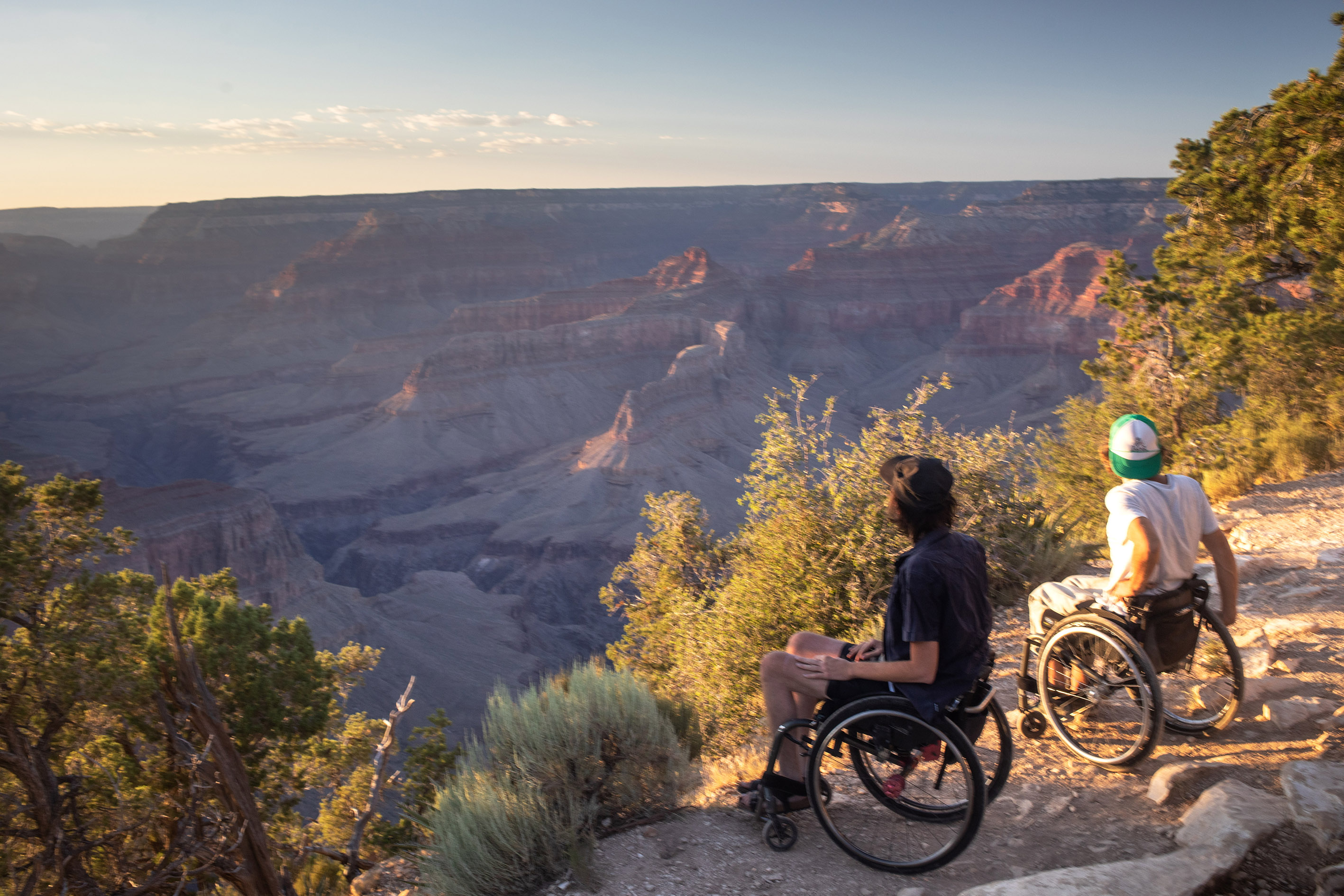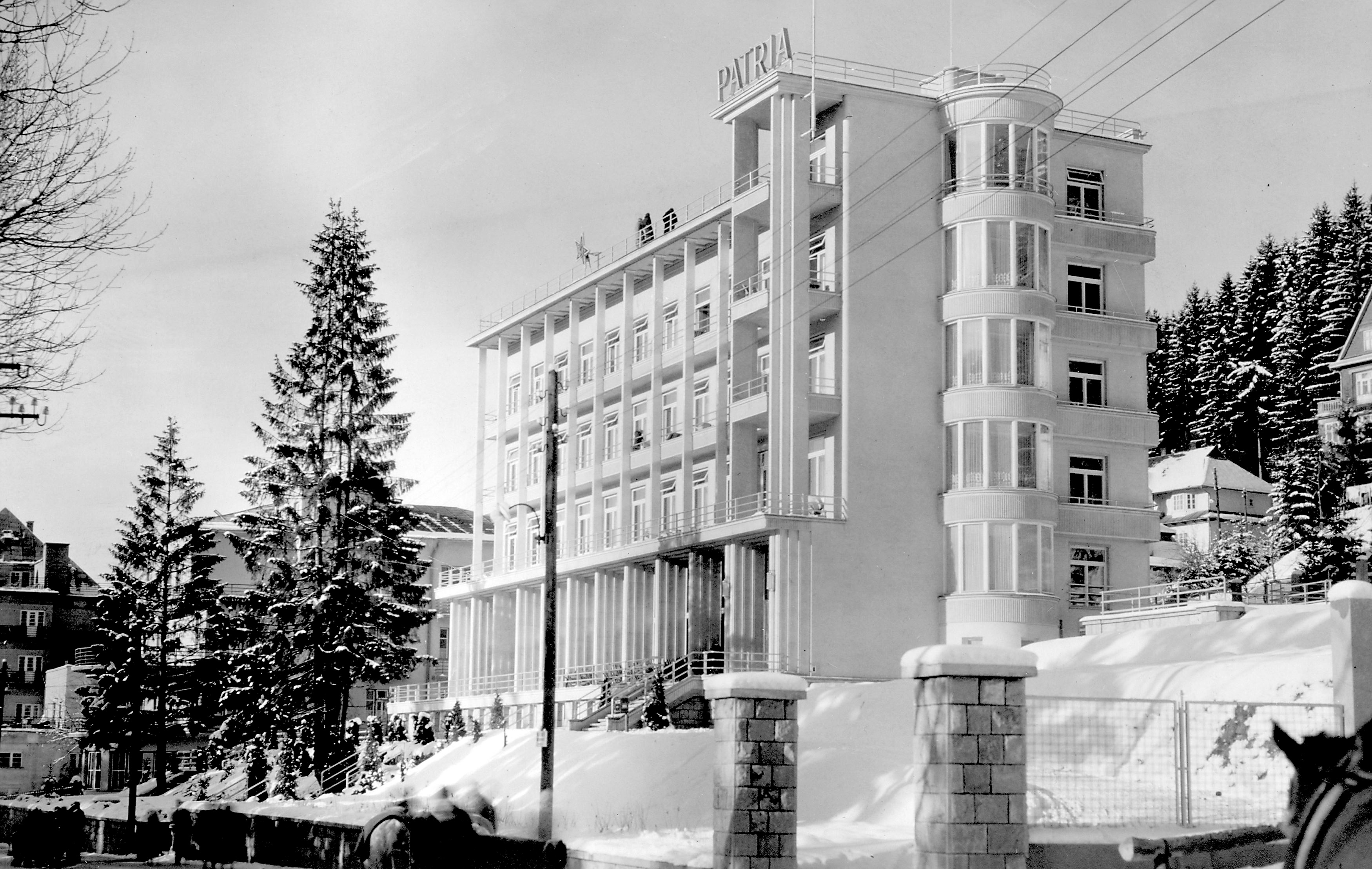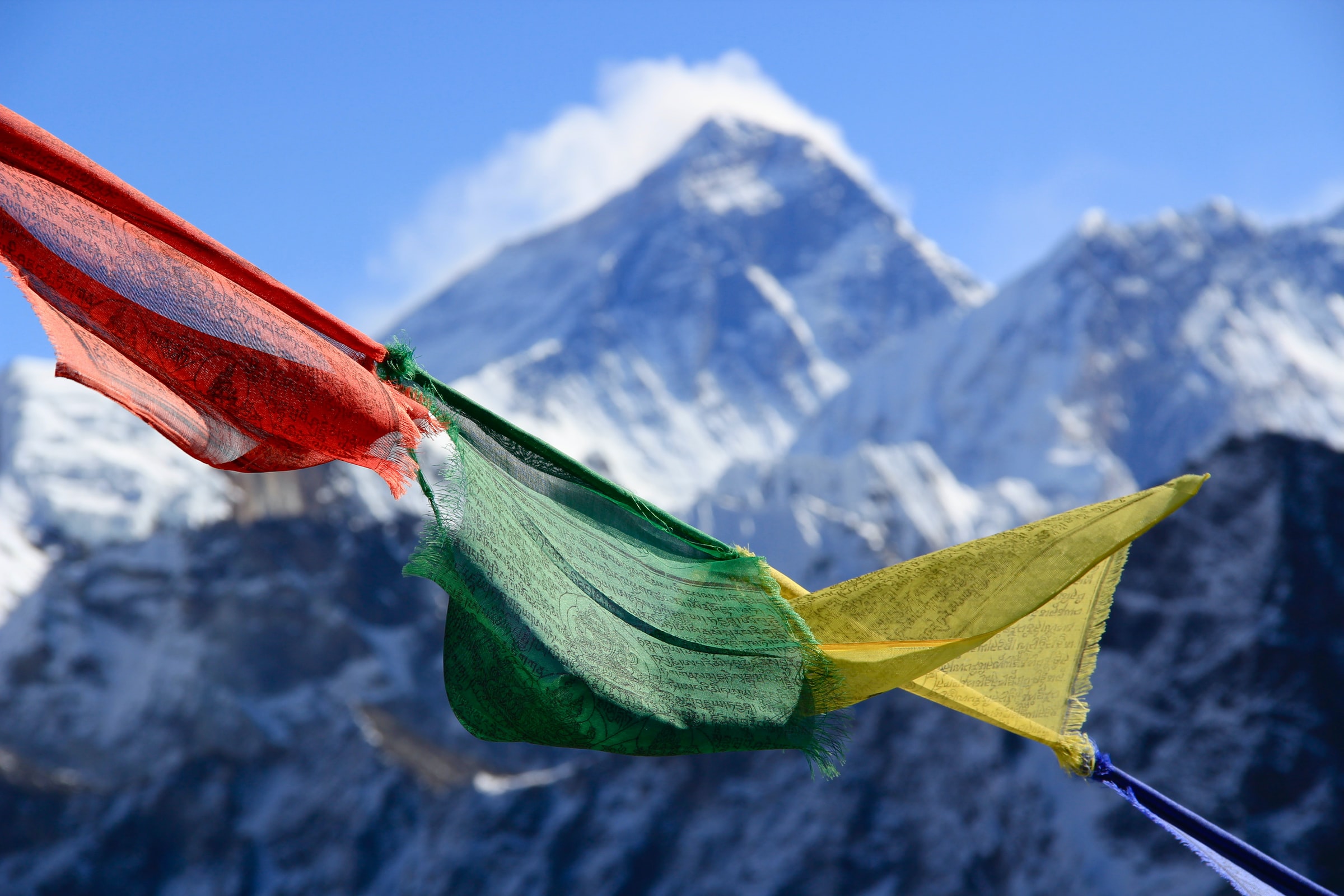
Alpinists are intimately familiar with death and grief. A therapist thinks he can address the unique needs of these élite athletes.
In mountain towns, an early-autumn snowstorm is a nuisance and a lure. It runs some people out of the high country but draws others in. During the first week of October, 2017, a foot or more of snow fell in the peaks south of Bozeman, Montana. Before dawn on the fifth, a group set off from a parking lot in Hyalite Canyon, a popular outdoor playground, just outside town. The man at the head of the group was spooked by the new snow. To minimize exposure to avalanches, he made sure that everyone ascended with caution, keeping to the ridgelines and bare patches, away from the loaded gullies. This was Conrad Anker, the famous American alpinist. It is often said that there are old climbers and there are bold climbers, but there are no old bold climbers. So far, Anker, at fifty-four, was an exception.
There was nothing intrepid, really, about this particular outing. It was basically a hike up a minor mountain formerly known as Peak 10031 (for its unremarkable altitude of 10,031 feet), which had been rechristened in 2005 in honor of the late climber and Bozeman idol Alex Lowe. The group was headed to Alex Lowe Peak to spread Alex Lowe’s ashes. Anker recognized that it would be cosmically stupid to kick off an avalanche on the way.
Lowe died in 1999, at the age of forty, during an ascent of Shishapangma, in the Himalayas. At the time, he was considered by many to be the world’s preëminent alpinist, and, even in a pursuit where untimely death is almost routine, his came as a shock. He was game for anything yet prudent, in his way—more dervish than daredevil. Still, snow is water, and it aims downhill. On Shishapangma, a massive avalanche entombed two climbers, Lowe and the cameraman David Bridges, under tons of frozen debris. A third, Anker, who’d fled in another direction, got flattened and engulfed by the blast, but after the air cleared he found himself stumbling through an altered landscape, alive and alone.
Lowe’s wife, Jennifer, back in Bozeman, got the call from base camp twelve hours later. Through the static of the satellite connection, Anker confirmed that her husband was gone. She’d had premonitions and dreams about this trip and—uncharacteristically, because she’d been a climber, too, and a supporter of her husband’s exploits—had begged Lowe not to go. But he’d felt obliged, both to his climbing partners and to the North Face and NBC Sports, which were underwriting the expedition. “It’s my job,” he’d told her. “It’s a work trip.” She and Lowe had three sons, aged ten, seven, and three.
Lowe’s peers had admired him not only for his exploits on rock and ice but for his attentiveness as a husband and father, though it says something about the mountaineer mind-set that a man who spent several months of the year away from home was considered a dutiful dad. “We were all in awe of him because he was able to climb and be a father,” Anker told me. Anker and Lowe were best friends, kindred spirits, and regular partners. Anker took it on himself to look after Jenni and the boys, spending more and more time in Bozeman with them, doing what he could to help them muddle through, and also to find a purpose for himself—a reason to live. Less than two years after Alex’s death, Anker and Jenni were married. Anker adopted the boys, and Lowe-Anker, as Jenni now called herself, had another world-class climber for a mate, with all the glory, anxiety, and exasperation that entails.
In 2016, while in Nepal, Anker got one of those calls where, as he puts it, you know what the news will be before you even put the phone to your ear. It was from his friend and colleague David Göttler, who was climbing on Shishapangma. He’d come across some old gear, and after some digging had uncovered what appeared to be the bodies of David Bridges and Alex Lowe. Their corpses had melted out of the glacier sooner than anyone had expected—climate change. A couple of months later, Anker, Lowe-Anker, and the three boys travelled to the Himalayas to recover the bodies.
For the boys, the trip was proof that their father was indeed dead, that there was no chance of a miraculous return, something that Max, the eldest, had fantasized about as a child. Anker, for his part, had had a recurring dream in which Lowe showed up to reclaim his brood. “It was all super heavy-duty for me,” Anker told me. “Here’s his wedding band, here’s his camera, here’s my water bottle in his daypack.” Lowe was found on his back, arms crossed over his chest. “He had his hand with his wedding ring curled against his heart,” Lowe-Anker said. It was hard work to dig out the bodies, wrap them up, and haul them down to base camp, including a rappel off a cliff. They’d lugged in a cord of wood and some accelerant. There is no real template for an encounter, in the high alpine, with the frozen corpses of a father, husband, and friend. “We looked at them for a day,” Anker said. “And then we wrapped them and cremated them.”
Earlier that week, Anker had run into a young climber named Hayden Kennedy at a Bozeman climbing gym. Kennedy, twenty-seven, had a few years earlier won a Piolet d’Or, the yearly mountaineering awards, for a first ascent of the south face of an infamous tower in Pakistan known as the Ogre. Kennedy, from Colorado, and his girlfriend, Inge Perkins, from Bozeman, had recently moved in together in an apartment in town. Since graduating from high school, Kennedy had lived out of his van, as he built his climbing résumé; Perkins, twenty-three and a strong skier and climber, too, was a senior at Montana State University, majoring in math. Anker lived down the street from the Perkins family and had helped introduce Inge to climbing. He had climbed decades ago with Kennedy’s father, Michael, an accomplished mountaineer, and had known Hayden since he was a boy.
Two days after the ceremony on Alex Lowe Peak, Kennedy and Perkins, while ascending Imp Peak, a remote backcountry-skiing spot in a range southwest of Hyalite Canyon, were caught in an avalanche. That early-season snow. Kennedy, partly buried, dug himself out, but there was no sign of Perkins. He searched the debris field for hours, probing and digging, although he must have known that a buried victim almost never survives for longer than twenty minutes. Eventually, he gave up, skied out, and drove back to Bozeman. One can only guess at the panic, anguish, and self-recrimination that coursed through him in the hours that followed—he called no one. In the apartment that night, he wrote a fifteen-page letter and then took a fatal dose of painkillers and alcohol.
Kennedy had never seemed depressed or violent or rash. “He had as untraumatic a childhood as a kid could have,” Michael Kennedy told me recently. “What did we not see? We are baffled.” Compared with the Ogre, Imp Peak was supposed to be a routine jaunt, a bit of fun. “In his note, he said, ‘It’s my fault we were there,’ ” his father went on. “I think what was troubling him in those final hours, though there was nothing explicit about this in his letter, was that he felt he hadn’t lived up to his own ideals.”
A week before Hayden Kennedy died, he had published a sorrowful essay, on a climbing Web site called Evening Sends, about the recent deaths in the mountains. In the essay, Kennedy posed the question that has often dogged people who live through experiences that kill others: “Why do some of us survive and others don’t?”
One afternoon last fall, Anker showed me a page in a journal with about three dozen names handwritten on it—friends and partners who’d died, all but a couple of them in mountain accidents, many summoning up tragedies I knew as well as some do Bible stories or baseball lore. The list began with Anker’s mentor, Mugs Stump, who fell into a crevasse while descending Denali, in 1992. Martyrs without a cause, except perhaps that of their own fulfillment.
“I had reached out to Hayden before and had talked to him about what loss was,” Anker said. “You fall into this pit, right after. It’s totally dark. You think about taking your own life. I hadn’t really talked much about it before, because there was shame or weakness associated with it.”
Late one evening, a week after Kennedy’s suicide, Anker called Tim Tate, a psychotherapist in Bozeman. Anker and Tate often went for hikes, and talked about their lives. Tate had helped him and the Lowes work through some dark periods, often marked by the reverberations of what Anker had come to identify as his survivor’s guilt—the nagging feeling that he was living someone else’s life.
“I’d like to introduce my mentor, Gandalf,” Anker said. This was a reference to Tate’s bearing, and his shamanistic attributes, which are deeply rooted, perhaps even innate, and yet not uncultivated. A Jungian by training, and a friend and acolyte of Jung’s purported successor, James Hillman, Tate has woven into his practice and self-presentation a variety of rituals and beliefs borrowed from Zen Buddhism and from the indigenous tribes of the northern plains. Tate laid out his approach to mental health and his version of what wellness might mean. “Rather than manage symptoms or problems, I prefer to give people a context for their experiences,” he told me recently. “Athletes have a particular calling we need to address. It isn’t a mythology of proving themselves. It’s a calling they cannot refuse. They have it on a loudspeaker in their brains. They can’t help but do what they do.”
Tate, seventy-one, has had a therapy practice in Bozeman since the early eighties. After the suicide of a friend who lived near Bozeman, Ted Yates, who had fallen into a cycle of depression and addiction following a bad car accident, Tate discovered that he had a knack for working with grief and loss. “Grief opens the gate to vulnerability, and for whatever reason that’s where I can stand up and be present,” Tate told me. “The motif of the elder, the wise man, the shaman, or some sort of wizard dude—it’s not anything I promote. It’s just me as I am. It has worked well with the athletes.”
In late September, Anker and Tate sent me a selfie video: two silverbacks on a ridge during a golden-hour hike. They were inviting me to Bozeman. “Come into our house and see where I work, and see my life with Alex,” Anker said. I wondered if he’d meant to say “my life with Jenni,” or if this locution was a testament to Lowe’s enduring presence, in that house and family and psyche. “It will have been twenty years, on the fifth of October,” Anker went on. “And all that we’re going through is a really important part of our connection, so—”
Tate said, “And stop by my office for a quick analysis. That never hurts.”
Tate greeted me at the airport—with a hug and a “my man”—and we drove into town and went for a walk. My wife and I had lived in Bozeman in the early nineties, just out of college. Alex Lowe was already a celebrity. A friend who lived across the street from the Lowes introduced me to him one day. It was like shaking hands with Michael Jordan.
Tate has never been a climber or a skier, at least not of the calibre that the athletes who come to see him are. He is, to them, a little like one of those coaches who never played the game but nevertheless grasp something fundamental about it.
In the early eighties, Tate fell in with a part-Crow, part-Sioux, part-white Montana man named Scott Frazier, who had had a near-death experience while working at an oil refinery in Billings, and who, not without some tribal resistance, had become a Sun Dance chief and opened the notoriously gruelling ceremony to outsiders. Tate participated in ten of these, each comprising three or four days of intense physical exertion, without food or water. At Frazier’s urging, he found and retrieved four eagle carcasses in the wild, for the plumage. He also put himself through traditional high-country fasts—vision quests, of a kind. “When you sit by yourself for three days on a mountaintop with no food or water, shit goes down,” he said. “All of the boundaries disappear.
That evening, we met up with Anker and the writer David Quammen for a drink. These three are among the regulars in informal meetings of Bozeman men who call themselves the Scotch Club: occasional well-oiled nights in backcountry cabins. Stories, verities, the shedding of masks. At this mini-session, as at other gatherings in town, I kept hearing references to regular people (that is, those who are not world-famous alpinists) who’d lost loved ones to climbing and skiing accidents; in this cohort, it seemed almost as common as cancer. Anker and Lowe-Anker, as the mahatmas of the mountain scene, seemed to have connections to all of them.
Anker is sandy-haired, strong-jawed, intense, and introverted; people in Montana have urged him to run for office, but he is certain that he is too thin-skinned. He grew up in central California, just outside Yosemite National Park, on land that had been in his father’s family since the gold rush. His mother, from outside Dresden, met his father, a serviceman, in Germany, just after the war. Anker got his start as a climber on California granite, then gravitated toward the icy amplitude of the Himalayas, before becoming a pioneer of a new kind of challenge: high-altitude big walls. He made the first ascent, with Jimmy Chin and Renan Ozturk, in 2011, of Meru, a tower of rock and ice in India that Mugs Stump had attempted twice in the eighties. It became the basis for a documentary film. Anker has a knack for dramatic story lines. He first made a name for himself outside climbing circles in 1999, when he found the body of the early British alpinist George Mallory, not far from the summit of Mt. Everest, where he’d perished seventy-five years before. Anker, whether by fate or by his own design, was caught up in a cycle of disappearance and reappearance, of death and its aftermath.
Anker had inherited Alex Lowe’s celebrity mantle in Bozeman. After drinks that evening, he took a curious route on the walk home, opting for back alleys instead of Main Street, slouch-darting along an archipelago of shadows. “Hungry eyes,” he said. He explained that people around town often looked at him in a way that indicated they wanted his time or attention. Fame was part of the deal—he’d chosen it, as a high achiever and the well-compensated face of a sport and a big sporting-goods brand—but he was uncomfortable under the public’s imploring gaze. He found greater ease at the planet’s harsh, unpopulated extremes, in the company of another superhuman or two, whose hungry eyes were invariably trained upward. Happiness is a cold bivy sack.
Anker said, “A fundamental difference, and why people are critical of this, is that we do this by our own volition, whereas if you’re a firefighter, a soldier, or a police person, you’re a hero, you did that on behalf of other people in society, or because you had to.”
Mountain climbing is a modern curiosity, a bourgeois indulgence. It consists mostly of relatively well-to-do white people manufacturing danger for themselves. Having been spared war, starvation, mass violence, and oppression, its practitioners travel great distances and endure great sacrifices to test their bodies and minds, encounter beauty, and experience the precariousness of existence and the terror and whatever revelations, fleeting or otherwise, may come of it. Though the whole enterprise may seem crazy or stupid or pointless, to many people it represents a necessary extreme of human endeavor, that combination of excellence and aberrance which propels a sliver of the population to set about going to the moon or writing symphonies, or dropping out entirely, as latter-day hermits and monks.
Each climbing season, there is a new tale to baffle the flatlanders. Last year, a climber named Daniele Nardi left behind a wife and their six-month-old son to make a fourth attempt on one of the most dangerous routes in the world, the Mummery Rib, on Nanga Parbat, in Pakistan. His partner, Tom Ballard, had lost his mother on K2. What a story the two men made: the obsessive and the undaunted son. Nardi and Ballard died, of course.
Max Lowe, who is thirty-one, is finishing a film about his family. “They aren’t so sure about the whole thing,” he told me recently. “They’re, like, ‘Why do you need to do this? Why do you need to stir up all this grief?’ Maybe I should’ve just gone to therapy.” Some people compare climbing to heroin: addictive, selfish, deadly. And yet, while society tends to condemn people who abandon their families for opiates and die of an overdose, we often treat fallen climbers, including Max’s father, as heroes. “It’s a lot to ask someone to give up something they love for you,” Max said. “But if you can’t expect your parents to give that up for you, what can you expect in this life?”
“Climbing is not a quantifiable sport,” Anker told me. “Usain Bolt was the fastest runner—we could measure that. Climbing is this sort of introvert-type activity that we do. It’s experiential. Two people alone on a mountain. Or even just one.
The best athletes were pushing the threshold of what was possible, partly because the gear allowed them to, and partly because the gear manufacturers expected them to. “You’re only as good as your next climb,” I’d heard people say.
Meanwhile, because of global warming, the mountains were changing. Ice was melting, and so conditions that had always been lethally unpredictable were becoming more so. Experience, both of the individual and the transmittable kind, isn’t keeping pace. The beta, as climbers call accumulated information about a route, has a sell-by date.
Although tropes like the hero’s journey, or the pitfall of persona, did not seem immediately germane to my meek and cynical urban existence, they struck a note with this adventuresome, big-horizon crowd. The mountain people routinely and purposefully put themselves into states of extreme privation—exposure to the elements, and to gravity and chance. Days, even weeks, in a tent or a bivouac, the hours empty of all but numbing chores and the howling of the wind. Occasional, life-defining epics of survival or attainment, stumbling half blind through storms, all hope lost, along with some fingers and toes. Ecstatic or even numinous encounters at the edges of the earth. To such people, the Crow Sun Dance, or the ordeal of the vision quest, or Buddhist principles of nonattachment and transience might be more than metaphor. The hero’s journey is a better description of a doom-hounded ordeal up and down a sacred peak in the Karakoram than of, say, a product rollout or a takeover war.
In the elements, performing tasks, the climbers achieve a narrowness of focus—a lizard-brain braid of adrenaline, expertise, and choice—that becomes a demented kind of meditation: Zen, on ice. Tate told me, “The challenge for each of them that I’ve met is how do you live a life of mountain sport and then return to your community and your relationships. It’s a little like soldiering. The absence, when you go home, of that intensity, that danger, that high-stakes energy, that camaraderie.” Back home, as high-country conquerors and life-style salespeople, the climbers tell their stories, over and over, until even they risk coming to believe in these versions of themselves. A guy like Tate, in spite of the affectations, helps them figure out who they might be.
Anker had been experiencing some misgivings about his leadership role in the climbing community. His mother had died. His heart was unwell. His best days as a climber were behind him, and yet he was prone to restlessness at home. He’d been battling bouts of depression and self-recrimination.
“Conrad is coming to a head in his life,” Max Lowe told me. “He’s lived a long life in this world where a lot don’t. Most of his friends are dead. I think he also feels responsible as an Old Guard guy who introduced a lot of them to climbing. Aging and the heart attack have kept him back from the mountains. Which is harder in a way than just dying in the mountains and being deified. Dying in the mountains is easier than having to live and watch your peers and friends die and having to face your own mortality and give up living on that beautiful edge.”
“Alex died a hero,” Anker said. “There was no old age. Just a short bit of physical pain and then you’re getting carbon-recycled again.” With me, he was relatively circumspect about his own struggles. Tate, he said, had helped him identify “the difference between my character and my persona—what masquerade is, and how the root of that is ‘mask’ and ‘masculine.’ ”

This is a shorterned version of an article which was originally published on 2nd March 2020 in The New Yorker.


